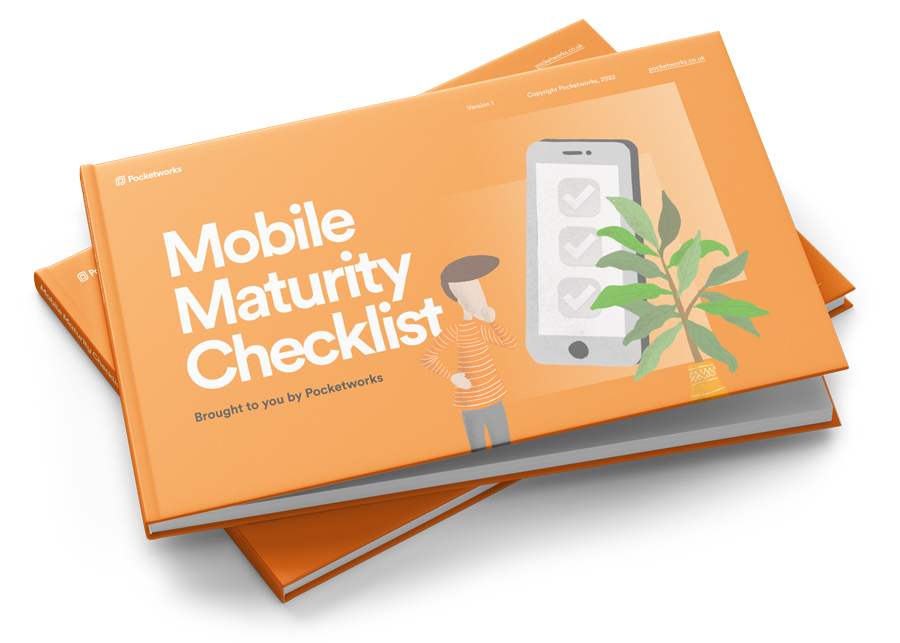So you've invested heavily in developing an app and launched it into the wild. Congratulations! But something's not right; you're just not getting the results you expected.
This article gives you some clear steps to take that will help you turn your failing app into a successful one. If you follow these steps, you should be able to diagnose the problems and devise a plan to address them.
Note that we've based it on three recent rescue projects we've undertaken since 2020. The most successful rescue has seen a 900% increase in revenue. So, don't give up hope yet!
How do you know your app isn't getting results?
Every business will have it's own success criteria for their app. At the end of the day, a thriving consumer app needs a healthy stream of new users. More importantly, it needs to keep them coming back and, ideally, have them buy something to generate revenue for the business.
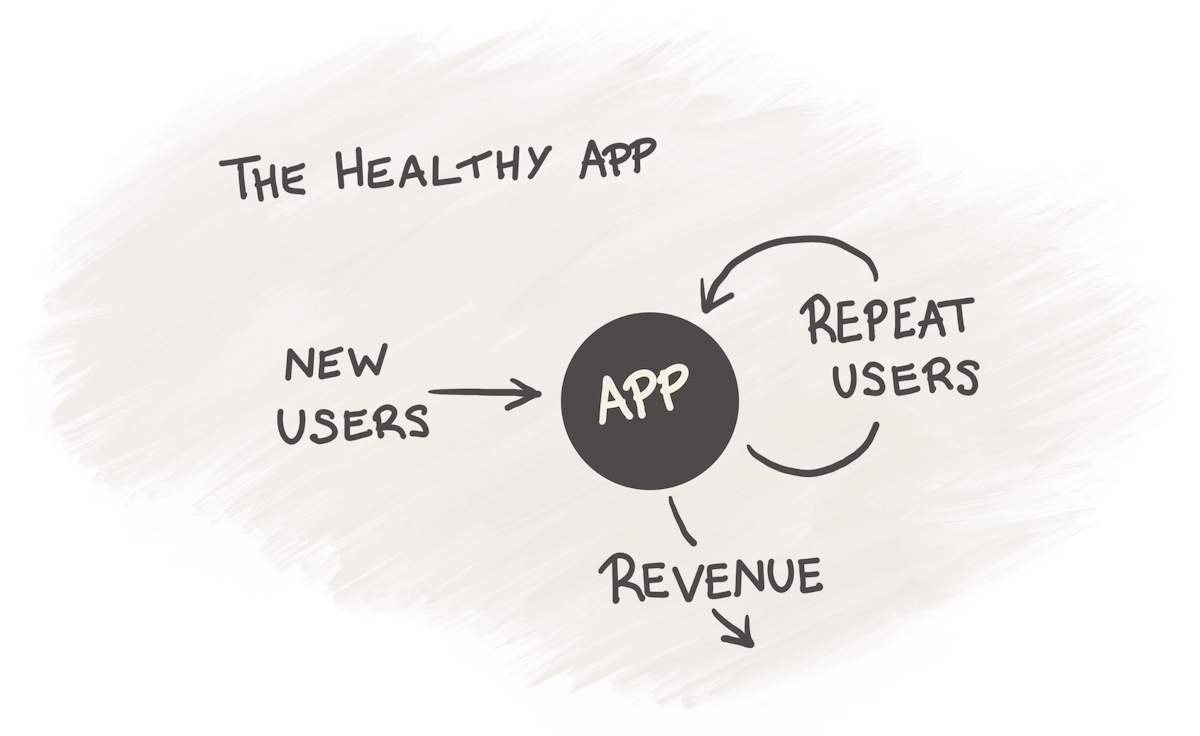
You'll have your own criteria. For example, Fender, a popular guitar manufacturer, puts emphasis on acquiring users at the top of the sales funnel.
"We didn't think more than 100,000 would sign up. But that many signed up in the first week. It expanded to 500,000, so we went all-out, and now we have 980,000 people using the product."
-- Anyd Mooney, Fender CEO
So, if you've delivered an app that isn't performing, what did it look like for you? If you're like most, you'll be seeing one or more of these problems.
- You're not getting enough downloads
- People download it but don't do much after opening your app
- People don't come back to your app very often, if at all
- You're app isn't generating much revenue
- You're getting negative reviews, or perhaps very few reviews
Do any of these resonate with you?
Good. Now let's take a look at how to turn your app into a successful one.
Diagnose, then act
You'll notice that the advice here has two elements: diagnosis and action.
We put a lot of emphasis on problem diagnosis—getting clarity on what's going on. This is because it's very hard to turn an app around if you're guessing what the problem is.
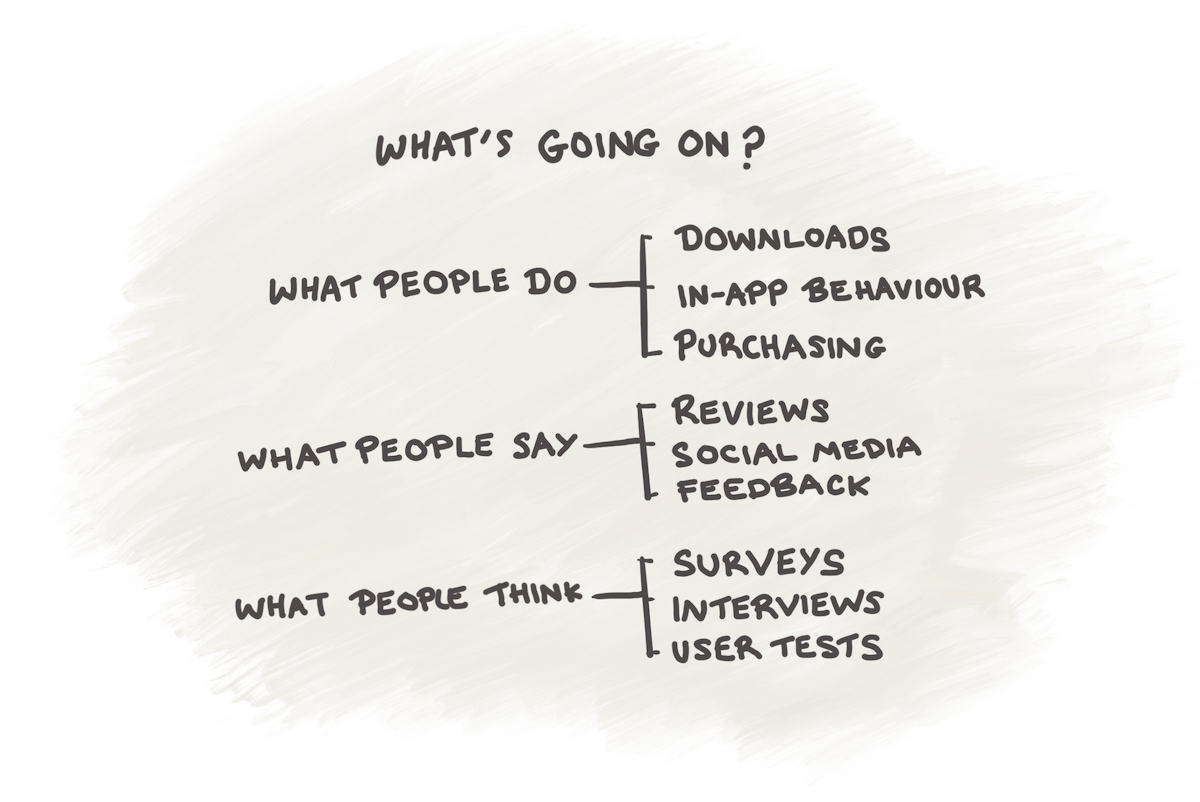
Diagnosing problems can be surprisingly difficult, so we'll do our best to get you started, focusing on simple things you can look at to figure out what's going on. Some of this stuff is just hard, and in those cases, we'll tell you who to hire to help you on your journey.
Then, once you really understand the problem, action is so much easier.
A step-by-step plan to turn your app around
Check your downloads
If you're not getting enough downloads, then you have a marketing problem. The best app in the world isn't going to be a success unless people download it and use it.
Check out this article we wrote that helps you find out why you're not getting enough downloads.
You may also be interested in this one: How to increase your downloads by getting more ratings and reviews.
I'd address this marketing problem before fixing a lot of other possible problems. You need some traffic through your app to understand if it's good.
Check if people are coming back
Good retention is a great indicator that people are getting value from your app. So I'd suggest you look at this as an indicator.
But what is good retention? Here's a guide for starters:
- If 20% of new customers return on or after day one, you’re doing well.
- If 5% of new customers came back on or after 30 days, you’re doing well.
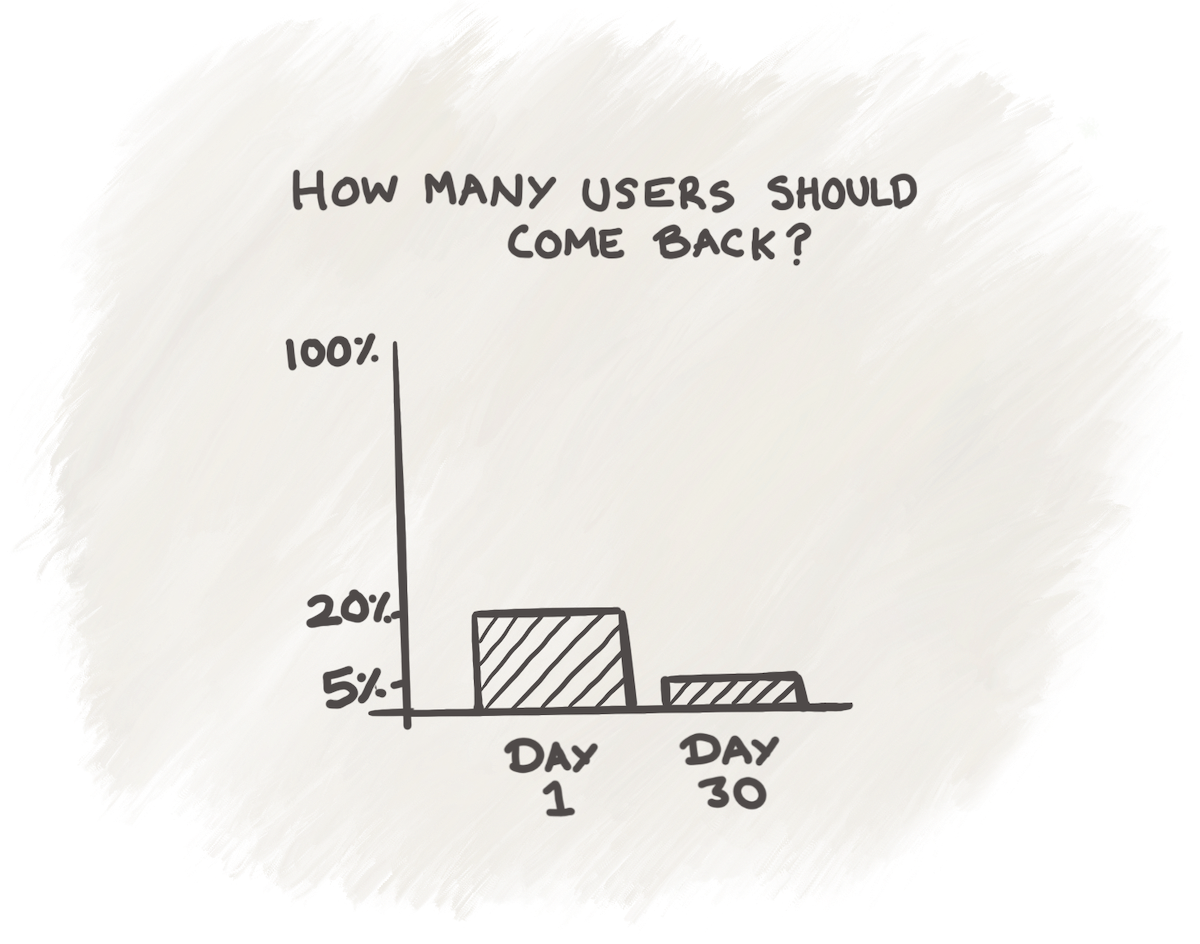
Every app category is different, so it's worth finding out the retention benchmarks for your app category. If you publish an iOS app, Apple gives you this data in App Store Connect. You can also see your actual retention figures here, if you were wondering where to get them from.
If you're downloads are good and your retention figures are good, then you probably have a good app. So you probably have a revenue problem, which we'll get to later.
If your retention figures are low, you need to figure out why. The following sections cover this in a bit more detail.
Do a quality sweep
It's so easy to develop an app with poor quality. I've personally worked in software development since 1999, and achieving quality in a high-volume consumer app is horrendously hard compared to building websites and desktop apps. Here's why:
- Consumers own phones of different sizes, and most apps are tested for only one, if at all
- Users set their own font sizes, and if you don't design for that, your app will be hard to use
- Some people use slow, cheap phones that are five years old
- Some people use older operating systems that you forgot to test on
- Some people use the app when they don't have an internet connection
- Testing payments and subscriptions is really hard; so much can go wrong
- Apps are built for different user types, so you have to test for each type (e.g. paid vs FREE)
So, mobile quality is important. And it's hard.
"62% of users uninstall an app if they experience crashes, freezes or errors"
-- Shake Crash Reporting SaaS
If you don't have good quality practises in place, I'd suggest you at least put aside 2–16 hours to test the hell out of your app on various phones, operating systems, and in the different situations outlined above. You might find major issues on the first pass, in which case you could fix those before doing a deeper test.
It's worth doing this before moving on, just to see if there are any obvious things that are putting people off.

You might want to read our FREE Mobile Maturity Checklist, which has a section on testing and quality.
If you're feeling brave, check out these cool automated testing tools, that take away a lot of the grunt work. This is worth a read if you're a technical person or a professional software tester.
Once you've found and fixed the big quality issues, that's going to increase your chances of people coming back. If that hasn't solved your problem, consider moving on to the next steps.
Understand user behaviours in your app
So you know that people don't come back to your app much, and it's probably because there's something about the app that isn't filling people with joy. So what's going on?
One way to find out is to look at your analytics. What the hell are analytics, I hear you ask? Well, you might have Amplitude, Firebase, or Google Analytics installed in your app. And you can use these to understand where things are going wrong.
This article tells you more about using analytics to help create amazing apps.
The problem is, most apps have a pretty shitty analytics implementation. So, as a starting point, you could hire an app growth expert to look at your analytics and tell you what's going on. Pocketworks can help with that, and there are loads of mobile growth consultants out there too. If you're charming, you might get a quick audit done for free, but perhaps budget £5K or so to get an audit of your analytics setup and some recommendations on how to fix it.
If your analytics are good, you'll be able to see things like this:
- What features are used the most or are barely used?
- Do people start the buying process and then not actually buy anything?
- Are people opening notifications?
- Is your app painfully slow at any point?
- Where do people abandon your app?
- Are users experiencing excruciating crashes?
The list goes on...
Once you get answers to these kinds of questions, you'll have a nice list of things you can do to improve your app.
If this sounds complicated, it's because it is. Another simpler option is to find out what people are saying about you, as discussed below.
Find out what people are saying about you
If you're lucky, people will be talking about your app online. So you just need to find out what they're saying, and you'll learn a lot about what's good or bad about it.
If I were you, I'd check all these sources, pull it into a spreadsheet, and then look for themes. You'll then begin to understand the problems people are having with your app, which stop people from coming back or buying from you.
- Look through your Google Play and Apple App Store reviews
- Does your target audience frequent any online forums and search for mentinos of your app there?
- What about Reddit and Quora? Are you mentioned there?
- Check social platforms like Twitter (X) and Facebook and grab that feedback too.
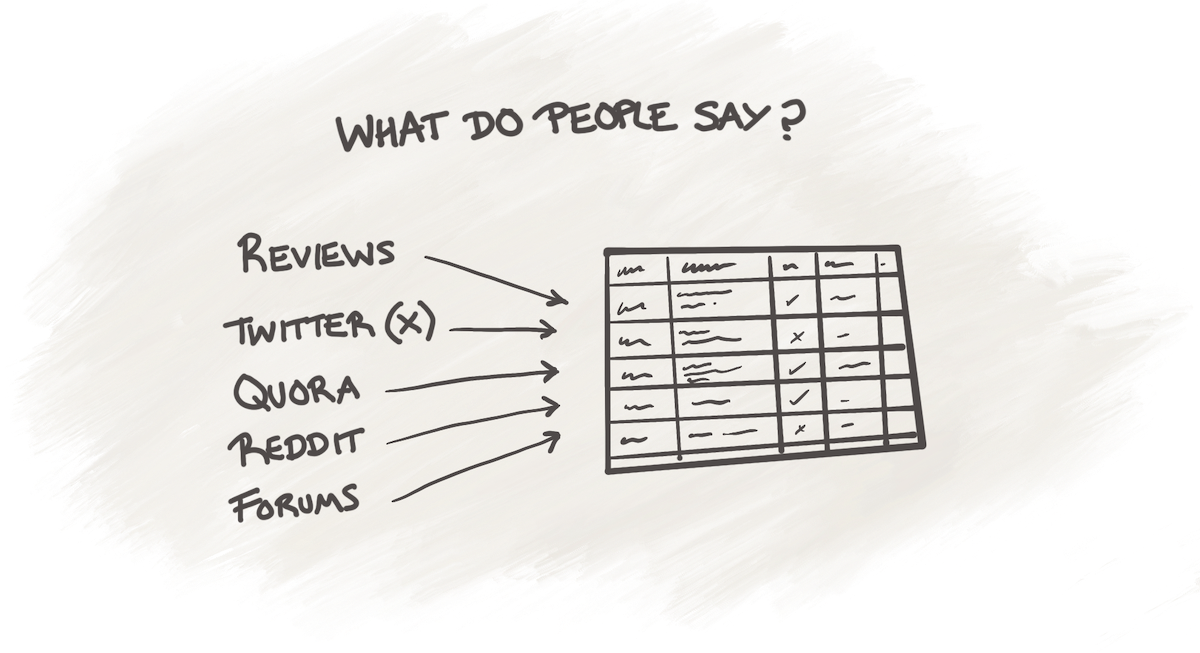
You get more advanced and use an online listening tool such as Brand24, which will scrape all these resources for you. They cost a little money, but they can save some time.
If you can't find much online, then it's time to talk to your users.
Understand user opinions
Another way to find out what's working is to simply ask people. This is called user research. I'd consider a few options for starters:
- Invite five people to do a user test where you observe them using the app and then ask questions.
- Invite your users to complete a survey, which asks open questions about your app.
- Install an in-app feedback widget, such as Appero, in your app and analyse the results
To give an example, we manage one app with 60K monthly active users and can easily get 600 survey responses in a few days. This stuff is gold dust. The same goes for in-app feedback plugins; you can hoover up tonnes of feedback quickly if you implement them well.
One word of warning: it's very easy to bias the results by asking the wrong questions. You would do well to hire a user researcher to assist with this. Pocketworks offers these services, and you'll find loads of consultants if you look for them on LinkedIn. A budget of £5K–£15K should get you quite far.
At the end of all this, you'll have some valuable insight as to why your app isn't quite doing the do for your audience.
Oh, if you want more ways to gather feedback, check out this article on voice-of-customer.
Find out why people aren't buying
If your app is getting a decent number of downloads and it keeps customers coming back, then you probably have a good app. So the problem might be that nobody is buying. So, naturally, you want to figure out why.
Now, if you've done any of the steps above, you might already have some insight into this, in which case you can skip this step. Otherwise, read on.
Typically, buying will mean something for your app:
- Up-front app purchase. E.g. Buying a note-taking app
- Subscriptions purchase. E.g., Subscribing to Calm for 12 months
- in-app payment, e.g., buying a new level in a game.
- Making a booking for a service E.g., ordering food on Deliveroo
- Buying a physical product E.g., Ordering some Charcoal on Amazon
If you have a problem with an up-front purchase, this is probably down to marketing, your app store page, and reviews. So I'll skip over this one.
Subscriptions are a big topic. The best advice here is to understand your conversion rates. For example:
- How many start buying a trial but then abandon it?
- What % of people start a trial? If it's 10%, you're doing well.
- What % of people convert from trial to paying? If it's 35%, you're doing good (4% overall)
If you're using something like RevenueCat, you should be able to get this data. Your analytics can provide it too, if the setup is right (see earlier discussion). Check out this article offering simple ways to increase your app revenue.
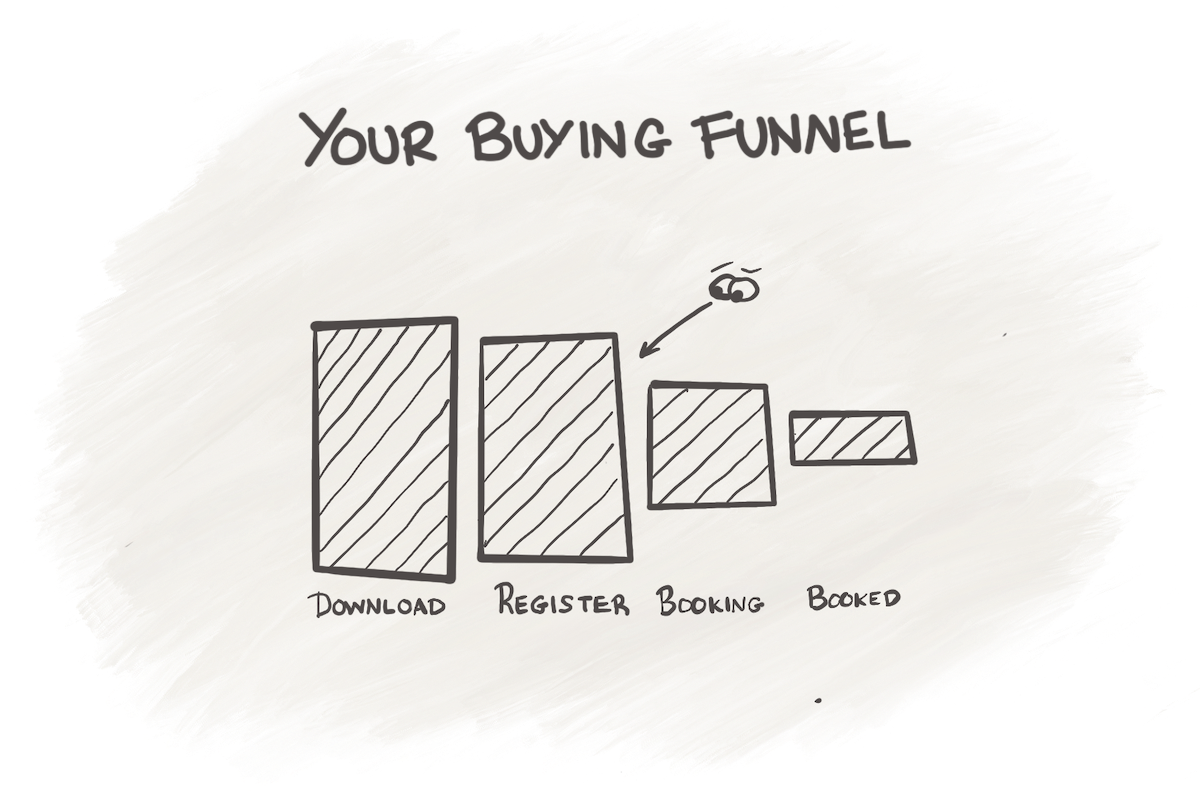
It's important to make sure you have clarity on these things so you can start to diagnose where things are going wrong.
For example, we had an app where only 2% of users purchased a subscription. We simplified the journey into the app by removing screens and making the paywall a lot clearer. This doubled our purchases from 2% to 4%. Happy days 🥳
A good step is to run experiments to try tweaking everything around how people buy.
Let's move on to physical purchases. If you're app sells products or services, you can take a similar approach. However, rather than looking at trial starts, you need to look at your purchasing funnel.
Here are some ideas for using analytics to figure out opportunities.
To wrap up this section, by understanding these numbers, you can start to figure out where you need to optimise. Then you just need to sit down and come up with ideas, which we'll discuss below.
Now we know the problem, let's fix it
This article has covered a lot of areas for diagnosing problems
- Are we getting downloads?
- What are people saying about us online?
- What do we observe when we watch our customers using the app?
- What do people say when we survey them?
- What is the analytics data telling us about how people behave in the app?
- What are the statistics for our purchasing funnel?
If you've made any progress in any of these areas, you should be able to come up with a list of problems to solve.
The question is, what problem should you fix?
You can use gut feelings, and that might be fine. However, I'd actually recommend scoring each problem you've found in a logical way. Experience tells me that gut isn't the best tool; we get excited about fixing a particular problem, lose perspective, and end up spending more time and money than necessary.
Fortunately, people have invented special frameworks such as RICE that can help you figure out what the best problems to fix are. Check out this article to learn how to do that.
If you have a revenue problem, it's usually quite easy to calculate what would happen if you fixed the problem. For example, for one app we worked on, within 10 minutes, we'd calculated that our best chance of increasing revenue would come from increasing downloads because the other areas were performing well. You just have to sit down and calculate what would happen if you fixed each thing, and then pick the option with the biggest impact.
Once you've found the best problems to run at, the next step is to come up with ideas.


